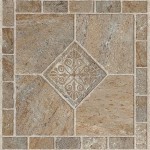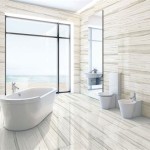```html
Best Gym Floor Over Carpet: A Comprehensive Guide
Transforming a carpeted room into a functional gym presents unique flooring challenges. Carpet, designed for comfort and aesthetics, is ill-suited for the demands of exercise. It lacks the necessary durability, shock absorption, and ease of cleaning required in a workout environment. Choosing the right flooring to place over carpet is crucial for both performance and safety. This article provides a detailed overview of the best gym flooring options for installation over carpet, focusing on key considerations and material properties.
Understanding the Challenges of Installing Gym Flooring Over Carpet
Before exploring specific flooring options, it's essential to understand why carpet generally isn't suitable for gym use. Carpet fibers can trap sweat, dirt, and bacteria, creating an unsanitary environment. Dropped weights can easily damage the fibers, leading to rips and tears. The cushioning provided by carpet, which may seem advantageous, can actually be detrimental. It can create an unstable surface, increasing the risk of slips and falls, particularly during exercises involving balance or agility. Moreover, the "give" in carpet can absorb energy, making workouts less efficient and potentially leading to muscle imbalances. Installing gym flooring directly over carpet can also present further challenges, such as moisture buildup and decreased stability if the carpet isn't properly prepared.
The type of carpet underneath is a significant factor. Low-pile, tightly woven carpets are generally more suitable for overlaying than high-pile, plush carpets. The thickness and density of the carpet padding also influence the stability and performance of the gym flooring. In some cases, removing the carpet entirely may be the most practical solution if the existing carpet is excessively thick, heavily damaged, or prone to moisture retention. However, removing carpet can be labor-intensive and costly, making the "over carpet" approach an attractive alternative for many.
Evaluating Available Gym Flooring Options for Carpet Overlay
Several types of gym flooring are viable options for installation over carpet, each with its own set of advantages and disadvantages. The best choice depends on the type of workouts planned, the available budget, and the long-term goals for the space. Important factors to consider include durability, shock absorption, ease of installation, ease of cleaning, noise reduction, and overall cost. The following sections will detail some of the most common and effective flooring materials.
Rubber Flooring: Rubber flooring is a popular choice for gyms due to its durability, shock absorption, and resistance to wear and tear. It's available in various forms, including rolls, tiles, and interlocking mats. Rubber rolls provide a seamless surface and are often preferred for larger areas. Rubber tiles offer more customization in terms of design and can be easier to install for smaller spaces. Interlocking rubber mats are a cost-effective and easily portable option, ideal for temporary or home gyms.
When installing rubber flooring over carpet, it's crucial to select a thickness appropriate for the intended use. Thicker rubber provides better shock absorption and can withstand heavier weights. Consider using a thin underlayment between the carpet and rubber to help distribute pressure and prevent indentations in the carpet. However, ensure the underlayment is firm and stable to avoid creating an unstable surface.
Foam Flooring: Foam flooring, typically made from EVA (ethylene-vinyl acetate) foam or similar materials, offers excellent cushioning and shock absorption. It's a popular choice for home gyms, children's play areas, and martial arts studios. Foam mats are typically interlocking, making them easy to install and disassemble. They are also relatively inexpensive compared to rubber flooring.
However, foam flooring is generally less durable than rubber and may not be suitable for heavy weightlifting or high-impact activities. It can also be more susceptible to indentations and tears. When installing foam flooring over carpet, choose a high-density foam to minimize compression and maintain stability. Ensure the carpet is clean and dry to prevent mold or mildew growth. Consider the thickness of the foam when making your decision. While thicker foam provides better cushioning, it can also create a less stable surface, especially for balance and stability exercises.
Vinyl Flooring: Vinyl flooring is a durable and water-resistant option that can be suitable for certain gym applications. It's available in planks, tiles, and sheets, offering a range of design options. Luxury vinyl plank (LVP) is a particularly popular choice due to its realistic wood or stone appearance and its ability to withstand heavy foot traffic.
Vinyl flooring is generally more rigid than rubber or foam, providing a stable surface for exercises. However, it offers less shock absorption, making it less suitable for high-impact activities or areas where heavy weights are dropped. When installing vinyl flooring over carpet, it's essential to choose a product with a rigid core to prevent bending or flexing. A thin underlayment can help to smooth out any imperfections in the carpet and provide a more even surface. Ensure the carpet is clean and level before installation to prevent unevenness or bumps in the vinyl flooring.
Carpet Tiles: While seemingly counterintuitive to place carpet over carpet, specialized carpet tiles designed for commercial use can be a viable option. These tiles typically have a low-pile, dense construction and a durable backing, making them more resistant to wear and tear than standard residential carpet. They are also often stain-resistant and easy to clean.
Carpet tiles can provide a more comfortable surface than rubber or vinyl, while still offering adequate stability for many types of exercises. They are a good option for areas where noise reduction is a priority. When installing carpet tiles over existing carpet, ensure the existing carpet is clean, dry, and securely attached to the subfloor. Use a high-quality adhesive designed for carpet tile installation to prevent the tiles from shifting or buckling. Choose tiles with a high density and low pile to minimize compression and maintain a stable surface.
Key Considerations for Installation Over Carpet
Regardless of the chosen flooring material, proper preparation is crucial for a successful installation. The following steps should be taken to ensure a stable and durable gym floor:
Cleaning and Preparation: Thoroughly clean the existing carpet to remove dirt, dust, and debris. Vacuum the carpet multiple times and consider using a carpet cleaner to remove any stains or odors. Ensure the carpet is completely dry before proceeding with the installation. Address any loose or damaged areas of the carpet before installing the new flooring.
Underlayment (Optional): Consider using a thin, dense underlayment between the carpet and the new flooring. The underlayment can help to distribute pressure, prevent indentations in the carpet, and provide a more even surface. Choose an underlayment specifically designed for use with the chosen flooring material.
Secure Attachment: Securely attach the new flooring to the carpet using appropriate adhesives or fasteners. Follow the manufacturer's instructions carefully. For interlocking mats, ensure the connections are tight and secure to prevent gaps or movement. For rolled flooring or tiles, use a high-quality adhesive designed for the specific materials involved. Proper attachment is essential for preventing slippage and maintaining the integrity of the gym floor.
Addressing Moisture Concerns: Carpet can trap moisture, leading to mold or mildew growth. Ensure the area is well-ventilated and consider using a dehumidifier to control humidity levels. If moisture is a concern, consider using a vapor barrier between the carpet and the new flooring. Regularly inspect the flooring for any signs of moisture or mold and take corrective action as needed.
Selecting the optimal gym flooring to install over carpet requires careful consideration of several factors. Understanding the challenges posed by carpet, evaluating the properties of available flooring materials, and implementing proper installation techniques are all essential for creating a safe, functional, and durable workout space.
```
Best Gym Floor Over Carpet For Home Staylock Tiles

Best Gym Floor Over Carpet For Home Staylock Tiles

Best Gym Floor Over Carpet For Home Staylock Tiles

Can You Install Rubber Gym Flooring Over Carpet

Can You Install Rubber Gym Flooring Over Carpet

Best Gym Floor Over Carpet For Home Staylock Tiles

Home Gym Flooring Over Carpet

Can You Install Rubber Gym Flooring Over Carpet

Best Gym Floor Over Carpet For Home Staylock Tiles

Can You Install Rubber Gym Flooring Over Carpet








